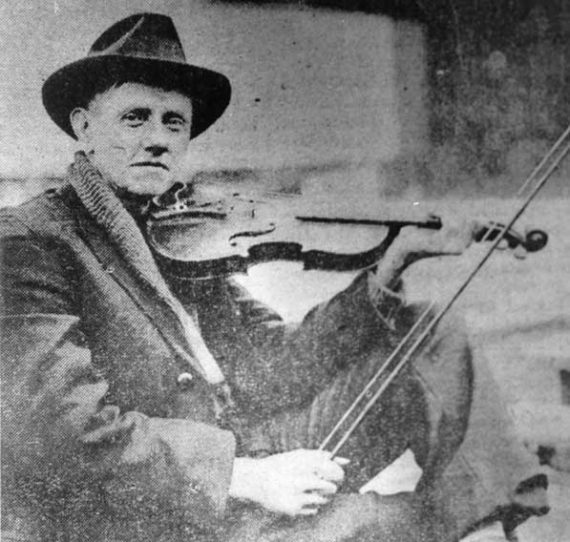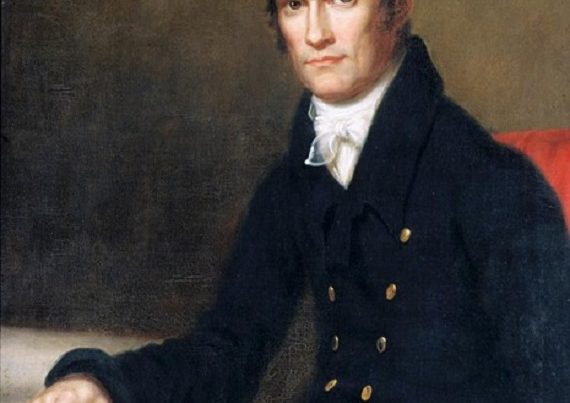
In the late 19th century, Romantic composers were driven by nationalism as a means to advance their art. For example, Russian composers like Tchaikovsky, Mussorgsky, and Rimsky-Korsakov made their composed music sound Russian, and the only way to do this was to become immersed in Russian folk music to see what made it tick. They studied work songs, play songs, love songs, church hymns, nursery rhymes, etc., in order to grasp what scales were used, what rhythms were used, what harmonies were favored, and what generally contributed to an identifiably Russian sound. They then used these discoveries as a compositional tool to connect their original musical creations back to the folk music that inspired it. As a result of this process, the musicologist became a valued commodity to Romantic composers as a person who literally wandered the countryside and collected folk songs, albeit “collected” meant writing down the music by hand in sheet music notation. Some musicologists, like Percy Grainger, became composers themselves, and used their own catalogs of collected folk music as inspirations for original compositions.
Before the invention of the phonograph, the only way to hear music was through live performances at the convenience of the performer. You could go to a formal concert or opera in a theater, watch a parade, attend church, participate in a sing-along, listen to your children at play, or any of a number of ways. But the one thing they all had in common was “live performance at the convenience of the performer.” There was no way to capture the sound and store it for future, private listening. Admittedly, there was one way to capture the song itself and store it so that it could be performed at a later time, and that was through written sheet music notation. However, you can’t put your ear to a page of sheet music and hear anything. The actual SOUND couldn’t be captured and stored with any practicality until Thomas Edison’s phonograph. The phonograph allowed the actual sound of any musical performance to be captured, stored, and replayed at the listener’s convenience and as often as desired.
This was truly a revolutionary development in human society, and like so many other revolutionary developments, the potential for both posterity and profit went hand in hand. Not only could we improve and advance our understanding of our own culture, we could make a few bucks, too. Imagine if those 19th century musicologists could have gotten their hands on a portable phonograph or two…
American folk music was an untapped motherlode of potential in the early 20th century, and although it depended on the foreign lands from where its immigrants originally came, the music quickly grew outside the box and developed its own unique directions and sounds. Nowhere was this development more pronounced than in the South, and nowhere were the primary source sounds more intact than in Appalachia. British musicologist Cecil Sharp spent the years between 1916 and 1918 wandering through Tennessee, North Carolina, Kentucky, and Virginia collecting folk songs (notating them all by hand) and listening to dozens of local legendary performers. He published his findings with the observation that there were more authentic British folk songs in Appalachia than in Britain. By the way, it has recently become progressively fashionable to denigrate Cecil Sharp for being a “nationalist,” and dismiss his work as being “culturally insensitive.” To naively misunderstand Romantic nationalism is to stupidly reject the entire Romantic movement in art. He did nothing different than the Norwegian composer Edvard Grieg, who identified and exploited connections between Norwegian folk music and folk tales with his own original Norwegian compositions. He did nothing different than the Hungarian composer Bela Bartok, who simultaneously wandered the Hungarian landscape looking specifically for Hungarian folk songs to catalog and use in original compositions. He did nothing different than every musicologist who specialized in one specific area of ethno-music. Sharp was openly, admittedly, and unashamedly seeking specific connections between Appalachian music and traditional Scots-Irish music, not musical global diversity. That was the whole point.
Five years after Sharp’s Appalachian journey, a New York record executive, producer, and engineer named Ralph Preer dragged his recording equipment down to Atlanta and sent out an all-call to anyone in the area who wished to be recorded. With that one small event, the great profitable rush to capture Southern music began. Understand, Preer was not capturing the song, which could easily be written down on music paper without the need for any recording equipment. He was capturing the performer’s actual sound, which provided the all-important context for the song to be valued. Music is, after all, a performance art.
One of the greatest Southern performers to attend those 1923 Atlanta sessions was a legendary Georgia fiddler named Fiddlin’ John Carson. Carson was a champion fiddler many times over in Georgia, and many believe he was the inspiration behind Charlie Daniels’ classic hit The Devil Went Down To Georgia. Fiddlin’ John Carson was also a singer, and although he frequently performed with a backup band, he could just as easily slay an audience all by himself. This recording of The Little Old Log Cabin in the Lane is believed to be the first country music song ever recorded, and launched Carson’s career into being a million-selling recording artist.
In 1927, Ralph Preer returned to the South, and set up another all-call session in Bristol, Tennessee. This time, he captured two then-unknown acts that would permanently change the American musical landscape – The Carter Family and Jimmie Rodgers.
Both Mississippi and Alabama claim Jimmie Rodgers, who would become known as The Father of Country Music. His mother was a Bozeman, and I have a lot of Bozemans in my family tree. He and I share a common ancestor, which makes Jimmie Rodgers my cuz. He recorded many original songs, but also recorded old standby Appalachian folk tunes. It was through Rodgers that the Country music industry remained permanently connected to the music of Appalachia.
The Carter Family exploded on the musical scene through those initial Bristol recordings, and their influence became primary source material for Country, Bluegrass, Gospel, and Folk music. The first song they recorded was an old Appalachian tune called Bury Me Under the Weeping Willow, and sounds like this.
The Carter Family consisted of A.P. Carter, his wife Sara, and his sister-in-law Maybelle. Maybelle was married to A.P.’s brother, and was also Sara’s first cousin. A.P. didn’t really do very much in the group, and Sara and Maybelle were the real stars, with Maybelle being the biggest star. Maybelle was a force of nature, and her style of playing guitar would be famously known as “The Carter Scratch.” The Carter Scratch would be copied by countless Country, Bluegrass, and Folk performers everywhere, and it is a way of strumming and picking the melody simultaneously. Here is an example of The Carter Scratch in their famous recording of Wildwood Flower.
Oddly enough, The Carter Scratch sounds remarkably similar to the old clawhammer style of playing the banjo, which was the most preferred style until Earl Scruggs re-invented the instrument in the 1940’s. Here is an example of clawhammer banjo played by Bobby Horton of Birmingham, and while you’re listening, compare it to The Carter Scratch.
Modern music performers claim their “influences” as a list of other performers they grew up listening to in one sound format or another that helped shaped their own sound. They may have never met those “influences” or even seen them perform live, but they definitely felt the impact due to the magic of recorded sound. However, those original recording artists can only claim their own family, friends, and congregation for shaping their particular sound. Ricky Skaggs can list The Carter Family as one of his “influences,” but The Carter Family can only list their own family tradition as being their biggest “influence.” In their day, everyone was exclusively shaped by those around them. It is through people like Cecil Sharp that we have access to Appalachian songs, but it’s through people like The Carter Family that we have access to Appalachian music.
When we look at the ingredients to Appalachian music, we obviously can see the Scots-Irish influence in the songs themselves. They were passed down from one generation to the next completely intact. However, Appalachian music has one secret ingredient that was not available to the Scots-Irish, and that was African American music. Geographically, there was a wide buffer zone between Appalachia and the Coastal Regions of the South where Black culture and White culture mixed and mingled for over 300 years. Although the South was clearly operating under a legal racial separation, those laws were powerless over culture, especially musical culture. In the South, there was not any kind of musical Apartheid. Black musicians and White musicians in the South freely exchanged ideas, and by the 20th century, the homogenization was obvious. African American influence provided new scales, new melodies, new song forms, and new instruments to traditional music that were not available anywhere else in the world. The Appalachian song may have been of Scots-Irish ancestry, but Appalachian music was totally Southern.
That is the only way to explain the modern phenomenon of finding the banjo in current Scots-Irish bands, which was never part of traditional Scots-Irish music. The banjo is an African instrument, and was added to Appalachian music through collaboration with African American musicians. From there, the influence of Appalachian music crossed back over the Atlantic and had a reverse impact by introducing the Scots-Irish to the banjo. Today, the banjo is all over “traditional” Scots-Irish music even though it is only a recent addition.
Finally, it is important to address Appalachian music through this modern notion of a music snob or a music purist. Fiddlin’ John Carson never once said, “I will not play THAT song, because it’s not a true mountain fiddle tune.” Quite the opposite, he played anything and everything he could get his ears around, and spent his career mixing and blending the different sounds of his day into his performances. So did The Carter Family. So did everyone in those early days of recorded music. Music was always a constantly evolving universe of all the sounds available at the time, and modern performers would do very well to stop limiting themselves through this nonsense of being a “purist” and follow that example. Southern music is too incredibly vast and infinite not to do so.
This piece was originally published at Dr. Daniel’s website.






